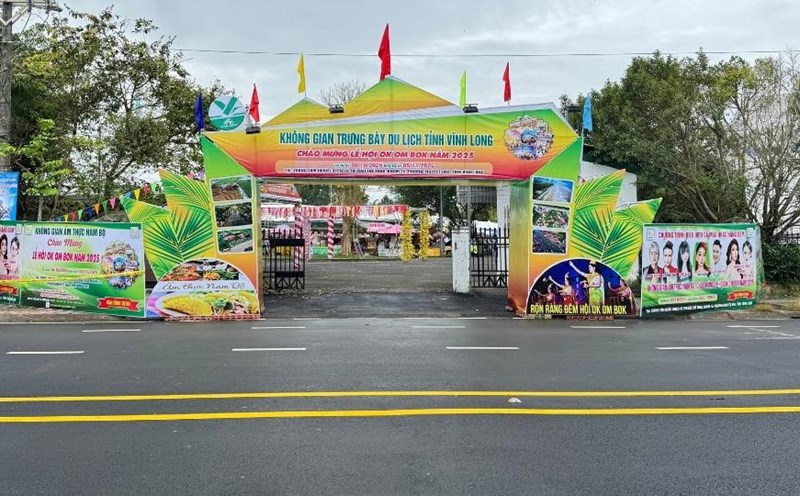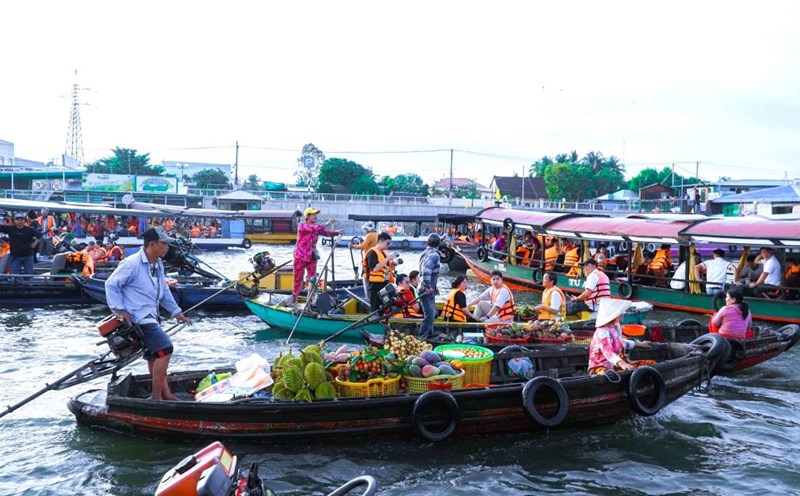Every year on the 15th of the 10th lunar month, when the full moon is at its brightest, the Khmer people celebrate the Ok Om Bok Festival, also known as the Moon Worship Ceremony or the Green rice Festival.
This is one of the traditional rituals to commemorate the favor of the Moon God, a god according to folk beliefs who is said to protect the crop and regulate the weather, bringing favorable weather and a prosperous life to people in the villages and hamlets.
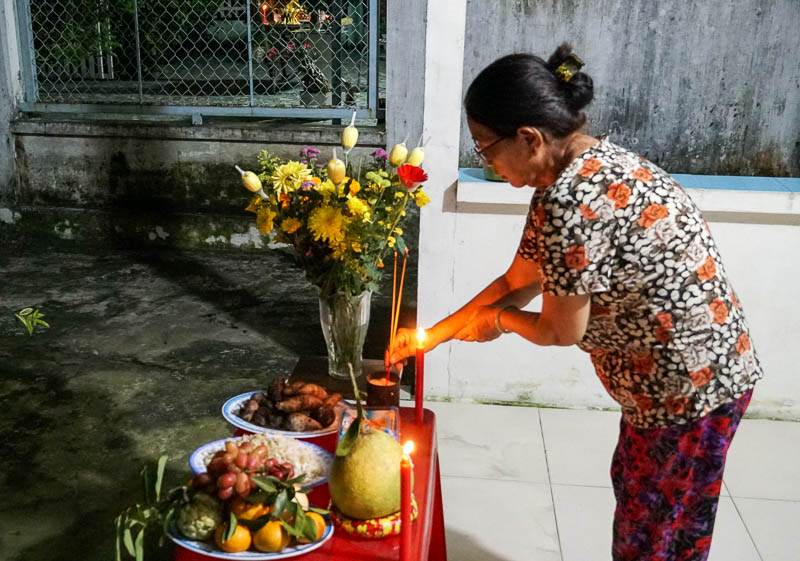
According to the Khmer people's beliefs, the Moon Worship Ceremony is an occasion to express gratitude to the god who has protected us over the past year, and at the same time, pray for a prosperous and warm next season for the family. The ceremony can be held at a pagoda, at home or anywhere where the moon can be clearly seen.
The offering tray is not elaborate, only includes products grown and harvested by the people themselves such as mon potatoes, ma ma, coconut, banana and traditional cakes. In which, green rice is an indispensable offering. The green rice is made from just ripe sticky rice, roasted and stir-fried, then stir-fried with sticky coconut rice with a little sugar to enhance the delicious flavor.
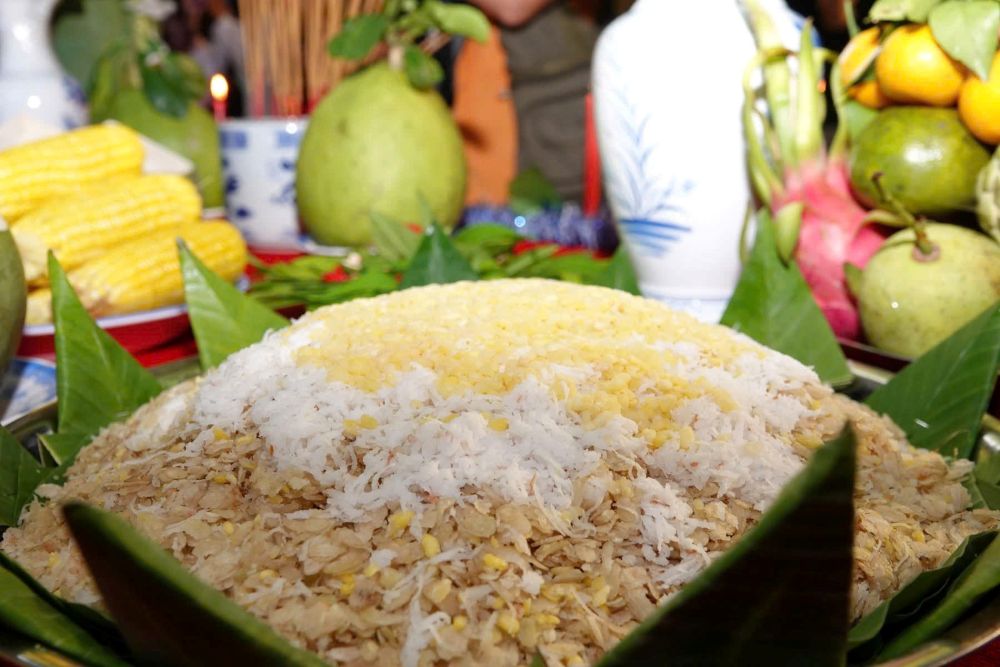
Ms. Duong Thi Quy, a Khmer in My Xuyen ward (Can Tho city), said that sticky rice is often harvested the earliest in the crop, so the Khmer people choose sticky rice to make to offer to the moon god.
"Refined grapes are a heart gratitude for the sweet harvest and seeds, and also a wish for a year of peace and prosperity, and for people to settle down and make a living," she shared.

The splash-off ceremony was the highlight of the ceremony. Monks, Obsessed monks, or the elderly in the family will pick up a handful of green rice and put it in the mouth of the young children, then gently pat them on the back and ask them for their wishes. That is a sacred moment symbolizing the transmission of blessings, aspirations and faith from the previous generation to the next generation.
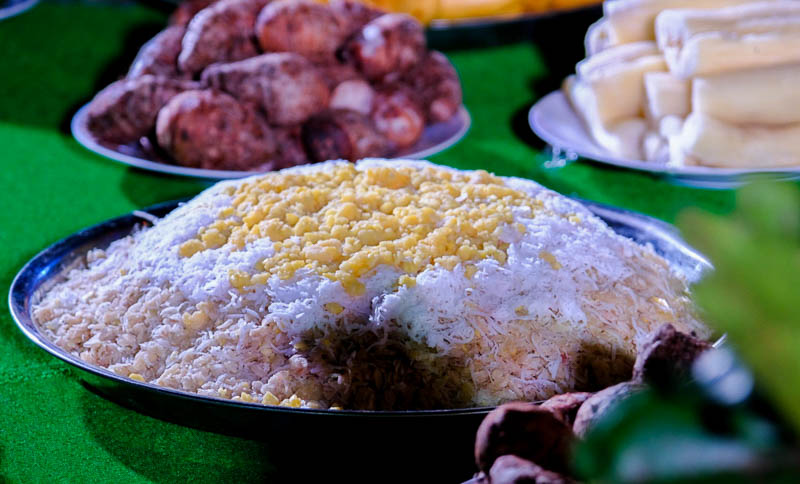
Not only does it mean thanking the god, the Moon Worship Ceremony also express the Khmer philosophy of the universe and time through offerings.
2 pillars are the gate symbolizing the "ries of the universe"; the altar is the "left land"; 2 sugarcane trees symbolize fertility; 3 candles are only used for 3 seasons of the year "soon, rain, cool"; 12 betel leaves symbolize "12 months of the year and 12 border animals".
7 areca nuts in the shape of a male bee representing "7 days a week"; 30 betel leaves are placed on the right side of the altar symbolizing "elong month"; 29 betel leaves are placed on the left side of the altar symbolizing "the full moon" and some candy, vegetable potatoes, and green rice. Each detail contains a deep meaning of the harmony between humans and nature.

In recent years, many localities in the Mekong Delta have restored and organized the Moon Worship Ceremony within the framework of the Ok Om Bok festival.
Mr. Nguyen Minh Tuan - Deputy Director of the Department of Culture, Sports and Tourism of Can Tho City said - This year's Moon Worship Ceremony is one of the highlights of the Ok Om Bok Festival - Can Tho City Ghe Ngo Race in 2025.
The event not only creates a bustling festive atmosphere but also contributes to promoting the unique cultural identity of the Khmer people to tourists, promoting tourism development in the direction of regional linkages.
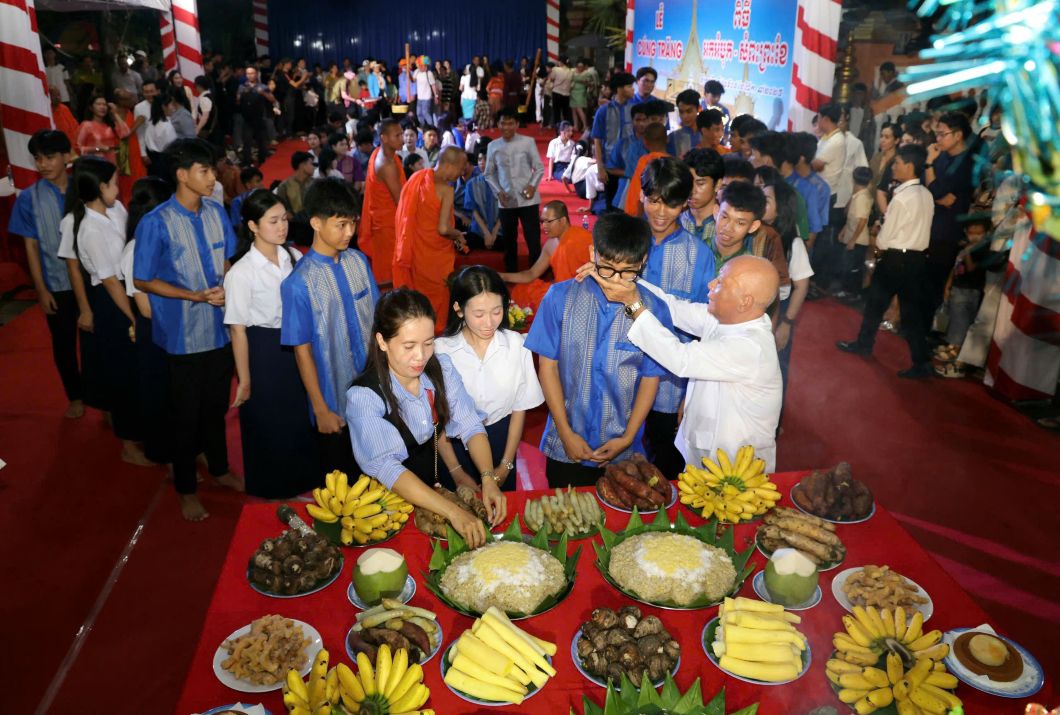
Mr. Tuan added that, in addition to its spiritual value, the Moon Worship Ceremony is also a symbol of preserving cultural heritage, honoring the spirit of community solidarity and gratitude for nature.
Maintaining and organizing annual festivals demonstrates the concern of the Party and State in preserving national cultural identity, while creating momentum for economic development and improving the spiritual life of the Khmer people during the integration period.



